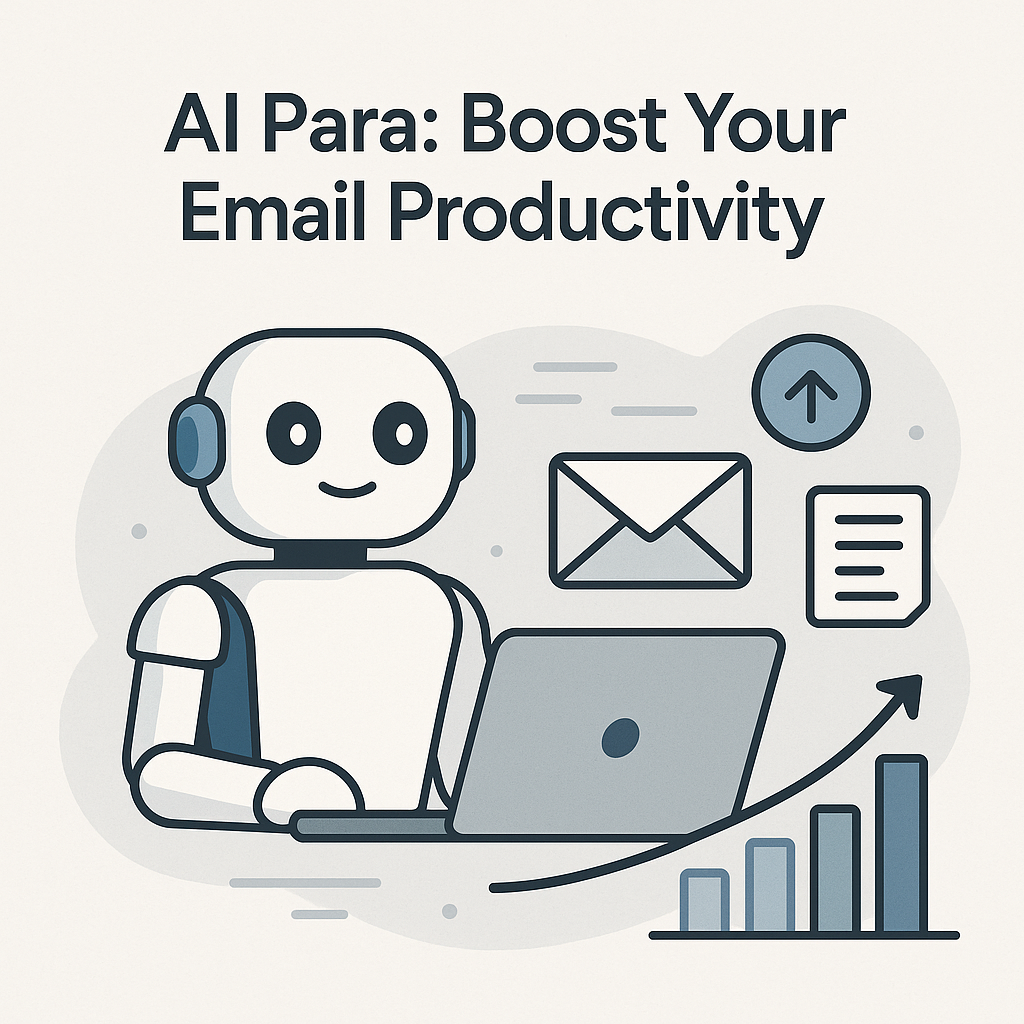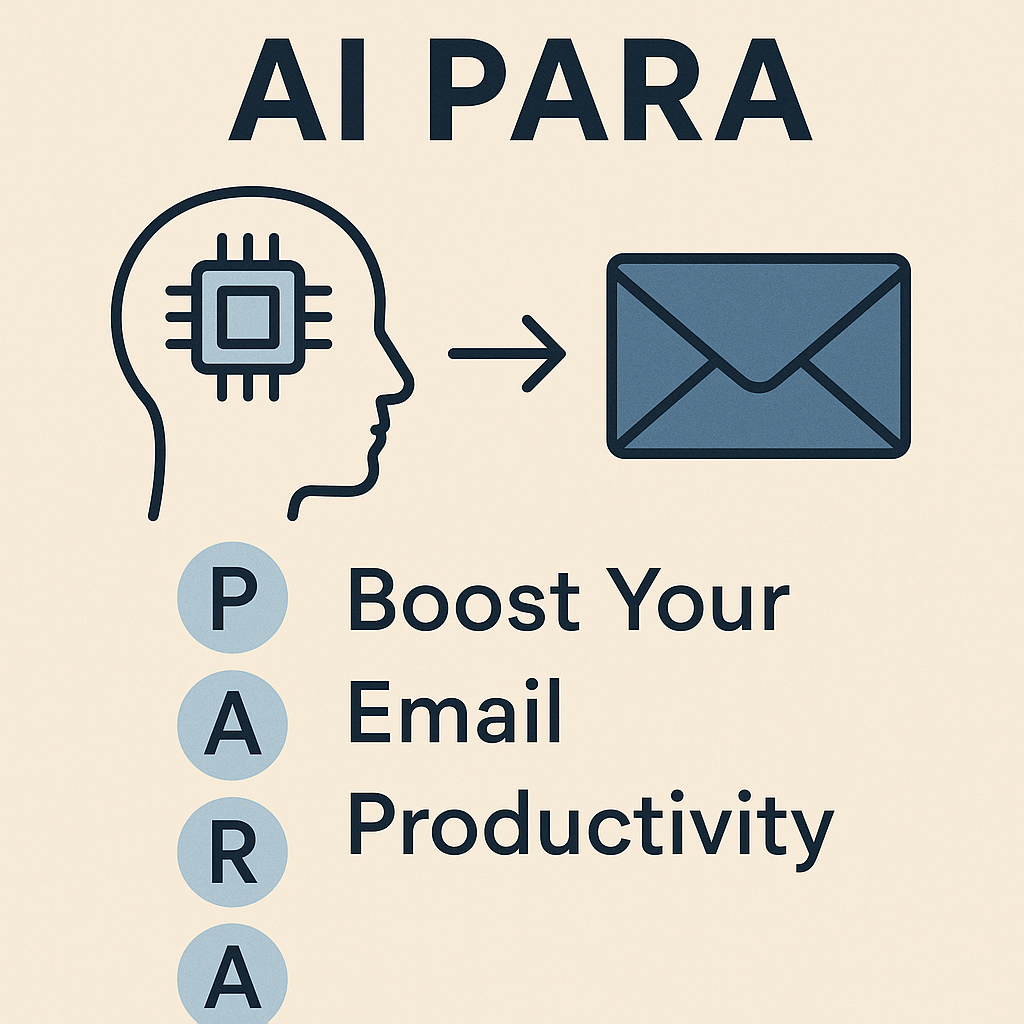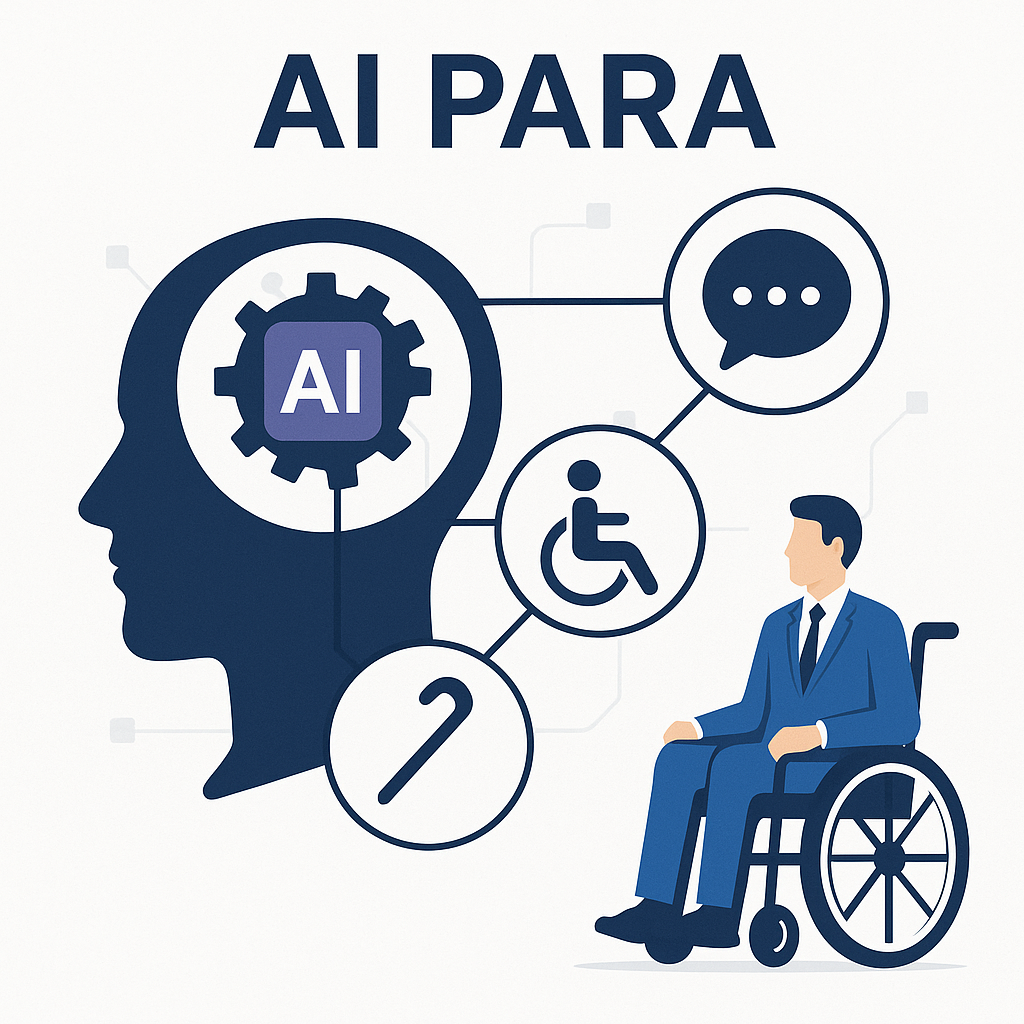AI Para: Boost Your Email Productivity

In today's hyper-connected business world, your inbox can feel less like a communication hub and more like a relentless tidal wave. The constant influx of emails – from critical client requests and team updates to marketing newsletters and spam – can quickly lead to overwhelm, decreased productivity, and mounting stress. We've all experienced that sinking feeling when faced with hundreds, or even thousands, of unread messages. But what if there was a smarter way to manage this digital deluge? Enter 'AI para' – the concept of leveraging Artificial Intelligence for a specific, powerful purpose: to supercharge your email productivity.
Understanding 'AI Para': How AI is Transforming Email Management
The term 'AI para' is a shorthand for "AI for," signifying the application of artificial intelligence to solve specific challenges. In the realm of email, 'AI para' means harnessing AI's capabilities to automate, organize, prioritize, and even generate communications. For too long, email management has been a manual, time-consuming chore. Professionals spend an average of 2.6 hours per day on email, according to some studies. This is where AI steps in, not to replace human interaction, but to augment our abilities, freeing us from tedious tasks and allowing us to focus on what truly matters.
AI is fundamentally changing how we interact with our inboxes. Instead of simply being passive recipients, we can now have intelligent systems that actively manage our communications. This shift is crucial for anyone looking to enhance their **AI for business communication** strategies and achieve **smart inbox management**. By understanding the core principles of 'AI para' for email, we can begin to reclaim our time and mental energy.
Key AI Features for Email Productivity: Automation, Prioritization, and Drafting
At its heart, 'AI para' for email productivity revolves around a few core functionalities that AI excels at:
1. AI-Powered Email Automation
Repetitive tasks are prime candidates for AI intervention. Think about the emails you send or receive daily that follow a pattern. AI can handle these with remarkable efficiency:
- Automated Sorting and Filing: AI can learn to categorize incoming emails based on sender, topic, or urgency, automatically filing them into designated folders. This makes finding specific information much faster.
- Smart Scheduling: AI tools can analyze your calendar and suggest optimal times for meetings, or even automatically respond to meeting requests.
- Automated Follow-ups: For sales professionals or project managers, AI can track sent emails and automatically trigger follow-up messages if a response isn't received within a set timeframe. This is a huge win for **AI in sales productivity**.
- Task Creation: AI can identify action items within emails and automatically create tasks in your to-do list or project management software.
Microsoft's AI assistant for Outlook, for instance, aims to boost productivity by automating tasks like organizing emails and responding to routine questions, allowing users to focus on higher-value activities. As noted by Microsoft 365, "Instead of spending hours organizing emails, responding to routine questions, and scheduling meetings, let AI handle these tasks automatically."
2. Intelligent Email Prioritization
Not all emails are created equal. AI can help you cut through the noise and focus on what requires your immediate attention. This is where **email prioritization AI** shines:
- Urgency Detection: AI algorithms can analyze the content, sender, and context of an email to determine its urgency. It can flag emails that need a quick response or highlight critical customer inquiries.
- Importance Scoring: Some AI tools assign an "importance score" to emails, helping you quickly identify messages from key stakeholders or urgent matters.
- Filtering Out the Noise: AI can learn to identify and filter out less important emails, such as promotional content or non-urgent updates, allowing you to focus on your core responsibilities. This ties directly into the concept of reclaiming your inbox, much like strategies discussed in conquering your inbox with smart triage and prioritization.
3. AI-Assisted Email Drafting and Responses
Staring at a blank screen, trying to craft the perfect response, can be a major productivity killer. AI can significantly speed up this process:
- Smart Reply Suggestions: Many email platforms now offer AI-generated short replies (e.g., "Thanks!", "Got it.", "Will do.") that you can send with a single click.
- Drafting Email Responses: More advanced AI can generate full email drafts based on a few keywords or a brief prompt. You can ask it to "draft a polite follow-up about the Q3 report" or "write a thank-you note for the meeting." The AI learns your tone and style over time, making its suggestions increasingly personalized.
- Summarizing Long Threads: Faced with a lengthy email chain? AI can summarize the key points, saving you the time of reading through every single message.
- Tone and Grammar Check: AI tools can also act as sophisticated proofreaders, ensuring your emails are professional, clear, and error-free.
Tools like eesel AI are designed to automate common requests, sort emails, prioritize tickets, and even complete basic actions like tagging or sending follow-ups by training on your real data. As highlighted by eesel AI, these capabilities help in streamlining email management significantly.
Implementing an AI-Augmented Email Productivity Framework
Simply adopting AI tools isn't enough; integrating them effectively into your workflow requires a strategic approach. Here’s a framework to guide you:
Phase 1: Assessment and Goal Setting
Before diving into tools, understand your current email habits and pain points. Ask yourself:
- What percentage of my day is spent on email?
- What are the most time-consuming email tasks for me? (e.g., sorting, drafting replies, finding information)
- What are my primary goals? (e.g., reduce inbox clutter, respond faster, improve communication quality)
Defining these aspects will help you choose the right AI solutions. This stage is about identifying where you need the most help, whether it's general organization or specific tasks like improving your follow up email template usage.
Phase 2: Tool Selection and Integration
Based on your assessment, identify AI tools that address your specific needs. There's a wide range of options, from built-in features in email clients to dedicated AI assistants.
When looking for solutions, consider tools that act as an **ai executive assistant**. Platforms like ai executive assistant can help streamline your workflow by managing communications, scheduling, and prioritizing tasks, freeing up valuable executive time. Other tools might focus purely on automation, or on generating content, or on advanced analytics for your communication patterns.
Crucially, ensure the tools integrate well with your existing email provider and other productivity software (CRM, calendar, task managers). Seamless integration is key to avoiding fragmentation and maximizing efficiency.
Phase 3: Configuration and Training
Once you've chosen your tools, invest time in configuring them correctly. This often involves:
- Setting Preferences: Define rules for sorting, flagging, and prioritizing.
- Connecting Accounts: Link your email, calendar, and other relevant applications.
- Training the AI: Many AI tools learn from your behavior. Mark emails as important or unimportant, categorize them as you would, and the AI will adapt. The more you use it, the smarter it becomes. Think of it as onboarding a new team member who needs to learn your preferences. This mirrors the concept of how AI agents can revolutionize your email productivity by learning and adapting to your needs.
Phase 4: Workflow Optimization and Refinement
AI is not a set-it-and-forget-it solution. Continuously refine your approach:
- Monitor Performance: Regularly check if the AI is performing as expected. Are emails being prioritized correctly? Is automation working efficiently?
- Adjust Settings: As your needs evolve or the AI learns more, tweak your settings and rules.
- Incorporate AI into Habits: Make using AI tools a natural part of your daily routine. For example, always check AI-suggested replies first, or use AI to summarize long threads before diving in. This continuous process helps you **reclaim email time and boost productivity**.
Choosing the Right AI Email Tools for Your Needs
The market for AI email tools is rapidly expanding. To find the best fit, consider these categories:
- AI Email Assistants: These tools often integrate directly into your inbox (like Outlook or Gmail plugins) and offer features like smart replies, drafting assistance, and summarization.
- Automation Platforms: Designed for more complex workflows, these can automate sequences of actions, such as sending follow-ups based on specific triggers or integrating with CRMs for **AI in sales productivity**.
- Inbox Management Tools: These focus on organizing, prioritizing, and cleaning up your inbox, often using AI to identify newsletters, promotions, or low-priority messages.
- AI Writing Assistants: While not exclusively for email, these tools can be invaluable for drafting professional and persuasive messages, as seen with tools like WriteMail.ai, which streamlines the entire email process with AI-powered suggestions.
When evaluating tools, look for features that align with your primary pain points, ease of integration, user reviews, and the provider's commitment to data privacy and security. As noted by Canary Mail, AI helps users organize, prioritize, and automate their inbox by categorizing emails, suggesting responses, and even summarizing long threads.
Best Practices for Using AI in Your Email Workflow
To truly maximize the benefits of 'AI para' in your email management, follow these best practices:
- Start with One Specific Problem: Don't try to automate everything at once. Identify the single biggest drain on your email time and find an AI tool to address it first.
- Trust but Verify: AI is incredibly powerful, but it's not infallible. Always review AI-generated drafts before sending, especially for sensitive communications. Maintain human oversight.
- Personalize Your AI: Take the time to train your AI tools. The more they learn your preferences and communication style, the more effective they will be. This includes teaching them what constitutes important information, similar to how an AI email assistant can learn your habits.
- Focus on High-Impact Tasks: Use AI to automate the mundane so you can dedicate more time to strategic thinking, relationship building, and complex problem-solving.
- Stay Updated: The field of AI is evolving rapidly. Keep an eye on new tools and features that can further enhance your email productivity.
- Combine with Other Strategies: AI is a powerful tool, but it works best when combined with good old-fashioned productivity habits. For example, utilize smart templates for common inquiries, a strategy that can be further boosted by AI, as discussed in articles on boosting email marketing performance metrics or leveraging AI for specific communication needs.
Case Studies: Success Stories of AI-Powered Email Productivity
Let's look at how 'AI para' is making a real difference:
Case Study 1: The Busy Executive
Sarah, a CEO, was drowning in emails, struggling to keep up with investor relations, internal communications, and strategic planning. By implementing an AI email assistant, she automated the sorting of routine inquiries, flagged urgent messages from her board, and used AI to draft initial responses to common questions. This freed up nearly two hours a day, allowing her to focus on high-level strategy and leadership. The AI also helped her identify key themes emerging from customer feedback emails, providing valuable insights.
Case Study 2: The Sales Team
A B2B sales team was losing potential deals due to slow follow-ups. They adopted AI tools for **AI in sales productivity** that automated personalized follow-up emails based on CRM data and prospect interactions. The AI also helped draft initial outreach messages and qualify leads by analyzing email content. This resulted in a 25% increase in response rates and a 15% improvement in closed deals within a quarter. They also found tools that could help manage competitor intelligence through email analysis, similar to how an automatic email manager might work.
Case Study 3: The Remote Project Manager
David, a project manager leading a global remote team, struggled with managing communication across different time zones and ensuring everyone was aligned. AI tools helped him by automatically summarizing project update emails, identifying action items for team members, and prioritizing urgent requests from clients. He also used AI to draft clear, concise status reports, significantly reducing the time spent on administrative communication overhead. This allowed him to dedicate more time to team support and project strategy.
The Future of AI and Email: What to Expect Next
The evolution of AI in email management is far from over. We can anticipate several exciting developments:
- Proactive AI Assistants: AI will become more predictive, anticipating your needs before you even express them. It might automatically draft a response to a follow-up question based on previous conversations or schedule a meeting before you realize you need one.
- Hyper-Personalized Communication: AI will enable even more tailored email content, ensuring messages resonate deeply with recipients.
- Enhanced Security: Beyond just managing workflow, AI will continue to play a vital role in securing our inboxes. Tools that detect sophisticated phishing attempts, like those discussed in AI phishing detection, will become even more critical.
- AI Agents for Complex Tasks: More sophisticated AI agents will handle multi-step email processes, such as coordinating complex project communications or managing client onboarding sequences.
As AI becomes more sophisticated, the line between human and AI assistance will blur, creating a seamless, highly efficient communication ecosystem. The goal of 'AI para' is to empower professionals, not to replace them, by offloading the repetitive and optimizing the complex.
Conclusion: Embrace 'AI Para' to Reclaim Your Inbox and Your Time
The overwhelming nature of email is a challenge many professionals face daily. However, by embracing the power of 'AI para' – Artificial Intelligence for enhanced email productivity – you can transform your inbox from a source of stress into a streamlined, efficient tool. From automating routine tasks and prioritizing critical messages to assisting with drafting responses, AI offers tangible solutions for reclaiming your time and boosting your output.
Start by assessing your needs, exploring the wide array of AI tools available, and implementing a strategic framework for integration. Remember to train your AI, verify its outputs, and continuously refine your approach. By adopting these practices, you can unlock new levels of efficiency, reduce email-related stress, and focus on the strategic, high-value work that truly drives success.
Ready to take control of your inbox? Start exploring AI email solutions today and discover how 'AI para' can revolutionize your workday.



